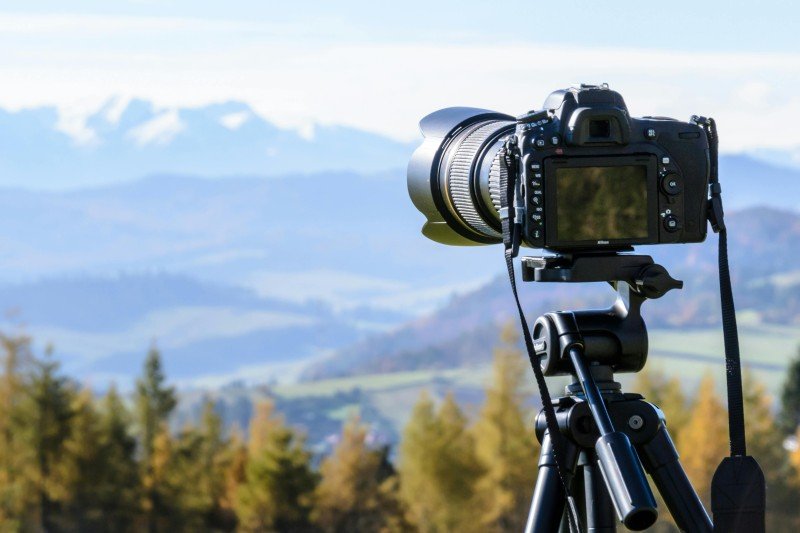The most common lens types are prime lenses and zoom lenses. A prime lens has a fixed focal length, meaning you can't zoom in or out. However, this limitation often results in superior image quality and larger apertures, making them perfect for low-light situations or achieving beautiful background blur, known as bokeh. For instance, a 50mm prime lens is a favorite among portrait photographers for its ability to create stunning, sharp images with a soft background.
On the other hand, zoom lenses offer versatility with their ability to cover a range of focal lengths. This flexibility allows you to quickly adjust your composition without changing lenses, making them ideal for dynamic environments like weddings or wildlife photography. A popular choice is the 24-70mm zoom lens, which provides a wide to a moderate telephoto range, making it a staple for many professional photographers.
Then, there are specialty lenses that cater to specific photography styles. Macro lenses are designed for capturing tiny details at close range, opening up a world of possibilities for nature and product photography. Wide-angle lenses, typically used for architectural or landscape photography, allow you to capture expansive scenes and create a sense of depth.
Choosing the Right Focal Length
Wide-angle lenses, generally defined as those with a focal length of 35mm or less, are perfect for landscape photography, architecture shots, and tight spaces. They allow you to capture an expansive field of view, making them ideal for framing vast landscapes or getting all of a building into the frame. However, be mindful of distortion—a common issue with wide-angle lenses that can make straight lines bend unnaturally. This can work to your advantage in some creative compositions but may detract from realism in others.
Standard lenses, typically around 50mm, offer a perspective that closely resembles what the human eye sees. This makes them versatile and great for a wide range of photography, from portraits to street scenes. They strike a balance between distortion control and depth of field, allowing you to achieve a nice blur in the background while keeping your subject in sharp focus. Consider using a standard lens if you're looking for a natural look that resonates with viewers.
On the other hand, telephoto lenses, which start around 70mm and extend up to 300mm or more, are fantastic for isolating subjects and capturing details from a distance. They compress the background and create beautiful bokeh effects, making them a favored choice for wildlife and portrait photography. However, it's important to note that telephoto lenses can make it challenging to capture wide scenes, as they tend to focus on individual elements rather than the broader context.
Exploring Aperture and Depth of Field
When it comes to photography, understanding aperture and depth of field is essential for mastering your camera lenses. Aperture refers to the opening in a lens that allows light to enter the camera. It is measured in f-stops, with lower numbers representing wider openings and allowing more light in. For instance, an aperture of f/2.8 is wider than f/8 and results in a brighter image. This control over light is crucial for capturing stunning photographs in various lighting conditions.
Depth of field, on the other hand, describes the zone of focus in your image—how much of the scene appears sharp and in focus. A wide aperture (like f/2.8) creates a shallow depth of field, which is perfect for portrait photography. This effect makes the subject pop by blurring the background, drawing the viewer’s eye directly to the subject. Conversely, a smaller aperture (like f/16) increases the depth of field, keeping more of the scene in focus. This is particularly useful for landscape photography, where you want both the foreground and background to be sharp.
Experimenting with different aperture settings allows photographers to achieve unique artistic effects. For example, using a wide aperture in a bustling city scene can isolate a subject amidst the chaos, while a narrow aperture can tell a broader story by including details from the foreground to the horizon. Understanding how to manipulate these settings is key to expressing your vision and enhancing the visual narrative of your photographs.
As you explore aperture and depth of field, remember that it’s not just about technical settings. It’s about creativity and storytelling. Take the time to practice, play with different apertures, and see how they change your photographs. Each shot you take is an opportunity to learn and refine your skills, leading you closer to mastering your camera lenses.
Caring for Your Camera Lenses
First and foremost, always use a lens cap when your camera is not in use. This helps protect the glass from scratches, dust, and accidental smudges. It’s a small investment that can save you from costly repairs or replacements. Additionally, consider using a UV filter, as it acts as a protective shield for your lens while also allowing you to shoot without any noticeable color impact.
Cleaning your lenses is another crucial aspect of care. Use a microfiber cloth specifically designed for optics to gently wipe the glass. Avoid using paper towels or your shirt, as these can scratch the surface. For more stubborn smudges, a few drops of lens cleaner can do the trick. Just remember to apply the cleaner to the cloth first, not directly on the lens.
Finally, store your lenses properly. Keeping them in a padded case or dedicated compartment in your camera bag can prevent damage. Also, make sure to store your gear in a cool, dry place to avoid moisture buildup, which can lead to mold and other issues. Taking these simple steps will ensure that your camera lenses remain in top shape, ready to capture those stunning photographs you envision.


